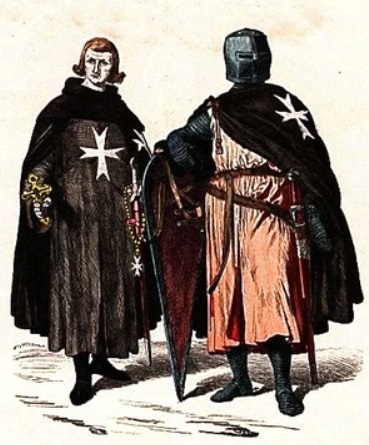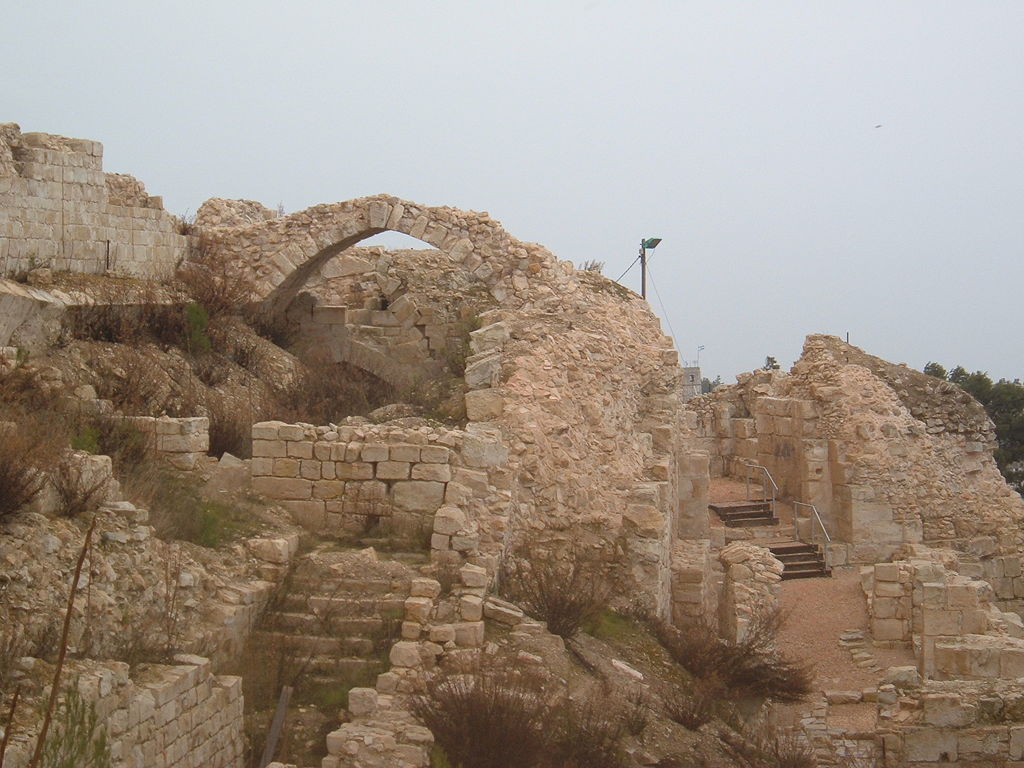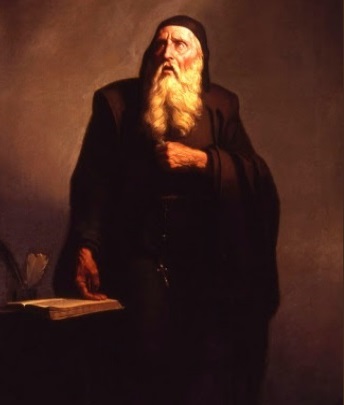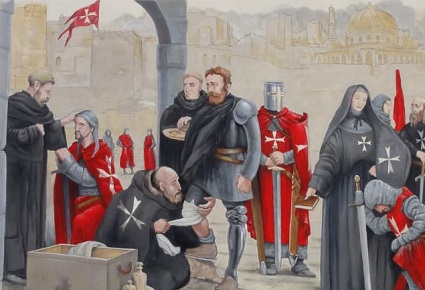In the secular histories of modernity, it has become common to proclaim a moral equivalency between the forcible conversions of the Islamic conquest and the Catholic Crusades, as if to suggest that there is an equity in principle between the coerced conversions to Islam imposed by the Arabs on their conquered peoples and the activities of the Crusaders. The end purpose is polemical: to smear Catholicism with the label of religious extremism, as is frequently done by those who insist that religion by its very nature tends to violence. Thus the Church is accused of “spreading religion by the sword” during the Crusades, lumping it in with the Muslims and basically saying that the Church has behaved no better than Mohammed. This article will examine the accusation that the Crusaders were interested in “spreading religion by the sword” and demonstrate the falsity of the charge while examining the role that coercion and force did play in evangelization during the Crusades.
While much has been written on the motives of the Crusaders, the only way to gain any certainty about why they left their homes in Europe and went to the Holy Land in the 11th-13th centuries is to examine contemporary documents from those involved in the Crusading movement. Let us begin by looking at several charters issued by various kings granting lands and privileges to the military orders.
Military Orders and the Use of Coercion
A grant was made to the Hospitallers in the middle of the twelfth century by Raymond Berenguer IV, count of Barcelona, “for propagating (propagandam) the faith and religion of holy Christianity.” (1) Similarly, Peter II of Aragon in 1208 wrote in a charter of the Templars that “wherever the religion of the Christian faith thrives, they devote themselves to its propagation (propagationi) and defense.” (2)

Similar statements may be found in the documentation of Spanish military orders. In 1171 Fernando II of Leon asserted that the brothers of Santiago had undertaken to fight against the infidel “for extending (dilatanda) the faith of Christ”, and in the same year the archbishop of Compostela, in favoring the same order, said that he wished “to propagate (propagare)…and extend (dilatare) the faith and Church of God,” while in 1231 Gregory IX referred to the zeal which the brothers of Calatrava “are known to have for the propagation (propagationem) of the Christian cult.”(3) These sorts of citations are frequently put forward as evidence that the Crusaders were engaged in the imposition of Christianity by coercive measures.
Yet what do these charters really prove? For one thing, we must remember that the military orders were also religious orders, bound by evangelical counsels, who by their very nature they existed for the purpose of extending God’s kingdom just as much as the Benedictines or other medieval orders. As such, it is perfectly natural and expected that their charters would mention the propagation of the Christian faith. Since they were Catholic religious orders, it would actually be suspect if the charters did not contain such language.
Furthermore, we there are certainly more ways to propagate Christianity than by violence. The fact that the charter of the Templars said they were dedicated to the propagation of the faith does not mean the charter envisioned this being accomplished through military means. There are many ways to spread Christianity; for example, Urban II, the pope who called the First Crusade, in 1088 made mention of the Spanish participants in the Reconquista converting Spanish Muslims “by word and example.” (4) Additionally, many of these charters that mention the propagation of the faith are very specific about the use of force, including what we could term medieval “rules of engagement.” A perfect example of this is Pope Alexander III’s confirmation of the Order of Santiago, issued in 1175, which contains the injunction: “in their warfare they should devote themselves to this objective alone, namely either to protect Christians from their [the Saracens ’] attacks or to be in a position to induce them [the Saracens] to follow the Christian faith.” (5) The latter clause, “be in a position to induce them to follow the Christian faith”, does not refer to forcible conversion, but rather an ideal situation in which Christian military dominance paves the way for peaceable evangelization by Christian missionaries. This was the ideal state of affairs, one in which the expulsion of the Islamic lords allowed the peaceable spread of Christianity unhindered. We will see more of this later.
It could be objected that this is just semantics; while denying that Crusaders attempted to impose baptism by force, it is admitted that they used force to eject Muslim rulers so that conversions could be peaceably sought, so in either case force is involved. This is true, but it is an important distinction, as the original accusation is not that the Crusaders used force or violence (which they clearly did, since the Crusades were wars, after all), but that they used force or violence in imposing Christian belief. Evidence overwhelmingly suggests that none of the military orders confronting the Muslims sought to impose baptism by force. (6) The Crusaders certainly did not object to using military force to establish conditions conducive to the peaceful conversion of Muslims, but that is a different question altogether.
An example of how military conquest created the conditions conducive to peaceful conversion can be seen in an anonymous pamphlet from 1260 entitled De constructione castri Saphet, which argued that the building of a castle in conquered Muslim territory meant that “the faith of our Lord Jesus Christ can be preached freely in all the aforesaid places [in the region of Safed] and the blasphemy of Muhammad can be publicly refuted and demolished in sermons.” (7)

We could also cite laws relating to the treatment of Muslim vassals living under Christian lords in the Holy Land. Although documentation of the manorial law imposed on the conquered lands by the Crusaders is scarce, the surviving documentation clearly indicates that Muslims living under Christian lords were not coerced into baptism, neither at the time of conquest nor later, and that though they lost public use of their mosques, they were permitted to freely retain their religion.
More documentation survives from the Reconquista in Spain. The religious freedom allowed by the orders to Muslims in the Spain were set down in writing in the form of surrender agreements (cartas de poblacio), which were structured as compromise agreements in which Christians would take lordship over reconquered land while Muslim vassals would be guaranteed certain privileges. In the charter granted by the Templars in 1234 at Chivert in northern Valencia, shortly after its reconquest, Muslim vassals were allowed to retain one large mosque and to practice their religion freely. Similar terms were conceded by the Hospitallers to Muslims at La Aldea near Tortosa, in 1258. (8)
In many cases, the Crusaders were surprisingly hostile to Muslim conversions, despite the encouragement of the Church and her missionaries. The reason for this is simple: Muslims, as non-Christians, were not entitled to the same legal protections as Christians. Thus the feudal services a lord could exact from his Muslim vassal were greater than those who could demand of a Christian. Muslims typically paid higher rents than Christians and were subject to more feudal obligations. For example, on the Templar estates at Villastar in southern Aragon Muslims were in 1267 to pay a quarter of produce in rent, whereas Christian settlers there paid only a seventh on some crops. (9) Sometimes lands of Muslim converts would be confiscated. This is unfortunate, as Christians ought to prioritize the salvation of souls over material benefit, but this fact does serve as a powerful argument against those who say the Crusaders were interested in forcibly converting Muslims. In many cases, the exact opposite was true. Wealthy landlords had a financial interest in keeping their vassals Muslim. This prompted Pope Gregory IX in 1237 to issue a letter to the Latin patriarch of Jerusalem and the three military orders in the Holy Land that those who sincerely desire to convert should not be prohibited, though conversion would not alter their social status. (10)
Indeed, there is little to indicate that the military orders sought to promote the conversion of those under their authority. For one thing they did not themselves have the personnel to instruct potential converts; the role of brother chaplains was merely to provide for the spiritual welfare of their colleagues, not engage in broad missionary work. Some insisted that the military orders should take a more active role in bringing about conversion. Innocent IV asserted that if infidel rulers refused to accept Christian missionaries into their lands, the pope could invoke the secular power to oblige them to do so (11). Blessed Raymond Lull in his Blanquerna and elsewhere similarly advocated the use of force to ensure that preaching of the Christian faith was permitted in infidel territories. Thus the role of the Crusaders was envisioned as ancillary to missionary work; they were not expected to engage in the work of conversion directly, but were expected to use their military might to make missionary work possible. (12) Elsewhere, Raymond Lull had written: “Let the knights become religious, let them be adorned with the sign of the Cross and filled with the grace of the Holy Spirit, and let them go among the infidels to preach truth concerning Thy Passion.” (13) Whether Lull envisioned the knights giving up warfare for preaching is questionable, but he clearly saw an evangelical motive in the Crusader movement, though elsewhere he denied that this participation should extend to compulsion. (14)

Later, in Bl. Raymond’s 1305 work Liber de fine, he suggests that trained clerics should accompany military orders on their expeditions to dispute with captives about the true faith and convince them that Mohammed was not a true prophet. (15) Again, the vision is military orders facilitating the peaceable conversion of infidels by Christian missionaries.
It is a legitimate to question whether we have answered the objection. In asking whether or not the Crusaders—particularly the military orders—used force in converting the Saracens, we have answered in the negative. But, although it is manifest that while the act of conversion itself was not coerced, coercion was a policy of the military orders in a broader sense. Consider this comment of Bl. Raymond Lull, again from the Liber de fine, in which he suggests that the military orders should suggest enticing the Muslim lords with promises of wealth if they would convert:
“And they are to say to them, that the lord warrior king will give them castles and cities, if they are willing to revert to the sacred catholic faith. And they should demonstrate to them the arguments for our faith; and if they are unwilling, they are to say to them that it has been decreed that the sword of the warrior will bewielded against them for ever, wounding and killing them.” (16)
While Lull makes clear in his other writings that he rejects compulsory conversion, he does not seem to disapprove of violence as an incentive to coercion. Is there any difference between the two? Is there a difference between forcing a man to do something and using force to incentivize a man to freely choose something?
To keep this in perspective, it must be remembered that Lull was writing in 1305, long after the Holy Land was lost. His teaching thus represents a late-medieval fantasy rather than any accurate representation of policy. Even so, the real dilemma about the ambiguous approach to coercion remains. Certainly, Bl. Raymond, the popes, and most other educated Catholics of the age knew the Church’s perennial teaching that baptism and conversion could not be forced. But if so, then why the ubiquitous presence of coercive measures, even if we can absolve the Crusaders of the charge of forced baptisms?
How Medievals Understood “Force”
Part of the tension here is a difference in the way “force” was conceived by medieval people. For the medieval, “force” or “coercion” in the act of conversion were very specific ideas: they referred to physical force that was immediate and applied directly to bring about the act of baptism or conversion—for example, putting a knife to the throat of an infidel and saying “Convert or die.” Anything short of this did not constitute “force” or “coercion.” For example, Muslims living in Aragon in the 13th century were forced to listen to Christian sermons preached by the Franciscans. This was not considered compulsion or force, because even though the Muslims were forced to listen to the sermon, the act of conversion itself was left up to the free will of the hearers. (17) Even those who advocated a more peaceful approach towards missionary work in the Holy Land admitted that force might be used to retain Christian lands and make the region safe for Christian preaching, as we have seen above with Bl. Raymond Lull; Roger Bacon was also an advocate of this view. (18)
There are many factors that go into a religious conversion, from the initial hearing of the Gospel, the period of inquiry, disputation, preparation and finally baptism. Force was only seen as illicit when applied to the last of these factors, the actual act of baptism. It was illicit coercion to point a sword at someone and say, “Accept baptism!” but it was not illicit coercion to point a sword at them and say, “Listen to this homily!”, because while baptism constituted the formal act of conversion, listening to a homily did not. Only the formal act of conversion could not be coerced.
Contrast this with the modern view, which would interpret “force” or “coercion” as being illicit when applied to any religious matter whatsoever. A medieval saw nothing illicit about forcing a Muslim to listen to a Catholic sermon, so long as the Muslim remained free to accept or reject baptism; to the moderns this would be appalling. By modern standards, force is interpreted broadly and seen as illicit if it is applied not just to conversion, but also to any act antecedent to conversion. The entire chain of events must be free, from the initial preaching of the Gospel right up to the reception of baptism. To apply any force at any point along this spectrum is seen as illicit.
Thus, if we were to sum up the distinction between the two views succinctly, we could say that for the medieval, the object of coercion was the the most important factor; for moderns, it is the simple fact of coercion that is objectionable, regardless of its object.
Which view is correct? We are not really looking for right or wrong approaches here, but simply comparing ideologies. Both approaches have had their adherents within Catholic Tradition. There were many even in the 12th and 13th centuries who thought the missionaries to the Muslims were using too much coercion, and there are those today who would sympathize with the view of Bl. Raymond Lull. How much the secular arm can or should support the Church’s mission has been probably the decisive question in the history of Christendom, one that was as perplexing to the Crusaders as it is today.
I am indebted to Alan Forey’s essay The military orders and the conversion of Muslims in the twelfth and thirteenth centuries for much of the research found in this article.
(1) H. Nicholson, Templars, Hospitallers and Teutonic Knights. Images of the military orders, 1128-1291 (Leicester, 1993), 18.
(2) ibid.
(3) J.L. Martın, Orı´ genes de la orden militar de Santiago (1170–1195)(Barcelona, 1974), 212-15, 224-5
(4) D. Mansilla, La documentacio ´ n ponti- fi cia hasta Inocencio III (965 – 1216) (Rome, 1955), 43-5 doc. 27
(5) Martin, 248-54
(6) This did happen in the Baltic Crusades, however. See: http://unamsanctamcatholicam.blogspot.com/2012/08/the-baltic-crusades.html
(7) R.B.C. Huygens, ‘ Un nouveau texte du traite ´‘ De constructione castri Saphet ’’ , Studi medievali , 6 (1965), 386.
(8) Cartas pueblas de las morer ı´ as valencianas y documentacio ´ n complementaria , ed. M.V. Febrer Romaguera (Zaragoza, 1991), 10-16, 53-6, docs 1, 15;
(9) The chronicle of James I, king of Aragon , cap. 366, trans. J. Forster, 2 vols (London, 1883), vol. 2, 482
(10) B.Z. Kedar, Crusade and mission. European approaches toward the Muslims (Princeton, 1984), 77-8, 146-7
(11) ibid., 217
(12) Raymond Lull in Libre de Evast e Blanquerna , 80. 6, ed. S. Galme’s, 4 vols (Barcelona, 1935–54), vol. 2, 210-11.
(13) “Libre de contemplacio” is in: Beati Raymundi Lulli Opera , ed. I.Salzinger, 10 vols (Mainz, 1721 – 42), vols 9 and 10, p. 250
(14) ibid.
(15) Raimundi Lulli opera latina, vol. 9 (CCCM, vol. 35, Turnhout, 1981), 282–3
(16) ibid.
(17) M.D. Johnston, ‘Ramon Lull and the compulsory evangelization of Jews and Muslims’, in: Iberia and the Mediterranean world of the middle ages. Studies in honor of Robert I. Burns, S. J ., ed. L.J.Simon, P.E. Chevedden, etc., 2 vols (Leiden, 1995 – 6), vol. 1, 7-13
(18) Roger Bacon, Opus majus , 3. 13–14, ed. J.H. Bridges, 3 vols (Oxford, 1900), vol. 3, 120-2
Phillip Campbell, “Crusaders and Conversion,” Unam Sanctam Catholicam, April 16, 2013. Available online at http://unamsanctamcatholicam.com/2022/05/crusaders-and-conversion

